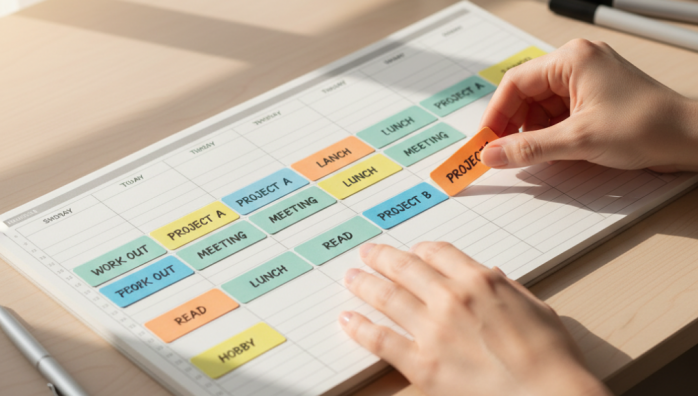Implementing Time Blocking For Focused Work
by admin in Productivity & Tools 10 - Last Update November 17, 2025

For years, my to-do list was my enemy. It was a sprawling, guilt-inducing document that grew longer every day. I\'d end my days feeling exhausted, having been \'busy\' all day, but my most important tasks were still sitting there, untouched. I was stuck in a cycle of reactive work—answering emails, putting out small fires, and hopping between a dozen different things. The breaking point for me was realizing I hadn\'t made any meaningful progress on a major project in over a week. That’s when I knew something had to fundamentally change.
What time blocking actually feels like
I’d heard about time blocking before, but it always sounded so rigid and restrictive. The idea of scheduling every minute of my day felt like a self-imposed prison. But my old way wasn\'t working, so I decided to give it an honest try. I quickly learned it’s not about controlling every second; it\'s about making intentional decisions about your most valuable resource: your time. For me, it became a simple contract with myself. From 9 AM to 10:30 AM, I\'m a writer. From 2 PM to 2:30 PM, I\'m an email-responder. It’s less about restriction and more about giving myself permission to focus on one thing at a time.
My simple 3-step process to get started
Getting started was surprisingly simple once I got over my initial resistance. I didn\'t use any fancy apps at first, just the digital calendar I already had. If you\'re feeling overwhelmed, I genuinely believe this approach is the easiest way to begin.
Step 1: The weekly brain dump
First thing on Monday morning, I spend about 15 minutes listing out everything I need to accomplish that week. Not just work tasks, but personal appointments, errands, and even rest. Getting it all out of my head and onto a single list provides incredible clarity.
Step 2: Assign tasks to days
Next, I look at my list and my week\'s calendar. I roughly assign the biggest tasks to specific days, considering deadlines and my energy levels. I know my creative energy is highest in the morning, so I schedule my deep work, like writing or strategic planning, for those early blocks.
Step 3: Block it out on the calendar
This is the magic step. I open my calendar and create events for my tasks. My biggest mistake early on was not being realistic. I’d block 60 minutes for a task that I knew would take 90. It just set me up for failure. Now, I’m brutally honest about time estimates and I always schedule buffer blocks—15-minute gaps between tasks to stretch, grab water, or handle a quick, unexpected query. I also schedule my lunch and breaks. If it\'s not on the calendar, it doesn\'t exist.
The surprising freedom in structure
Honestly, the biggest surprise was how much freedom this system gave me. Because I knew I had dedicated time for my important projects, I felt less guilty about taking a real lunch break or logging off on time. When distractions popped up, instead of immediately reacting, I’d ask myself, \'Is this more important than the task I\'ve committed to right now?\' Most of the time, the answer was no. The new thought or task just gets added to a list to be scheduled later. It’s a complete game-changer for maintaining focus and reducing work-related anxiety. It’s not about perfection, but intention. And that has made all the difference.














